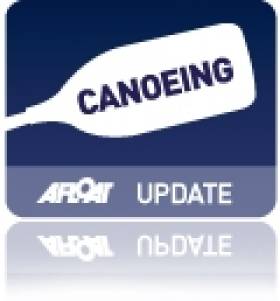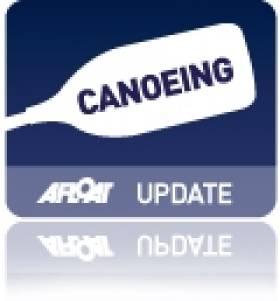Displaying items by tag: Fitzsimons
#CANOEING: Pat O’Leary qualified for the final of the KL3 paracanoeing event at the European Sprint Championships in Racice in the Czech Republic today. O’Leary finished second in his heat of the 200 metre event. Barry Watkins and Michael Fitzsimons finished 2.82 seconds behind the winners, Lithuania, in the semi-final of the K2 1,000. This placed the Ireland crew sixth and ended their campaign as only the top three progressed to the final. Jenny Egan finished sixth in both her heat and semi-final of the K1 500. The top three in the semi-final qualified for the final. Egan is set to compete in the B Final.
European Canoe Sprint Championships, Racice, Czech Republic (Selected Results; Irish interest)
Men
K2 1,000 – Heat One (First Three Directly to Final): 7 M Fitzsimons, B Watkins 3:22.036. Semi-Final (First Three to A Final): 6 M Fitzsimons, B Watkins 3 mins 18.868 secs.
Paracanoe, KL3 200 – Heat Two (First Three Directly to Final): 2 P O’Leary 44.208 secs.
Women
K1 500 – Heat Three: 6 J Egan 1:58.704. Semi-Final (First Three to A Final): 6 J Egan (to B Final) 1:55.076.
#CANOEING: Barry Watkins and Michael Fitzsimons finished sixth in their semi-final of the men’s K2 1,000 metres at the Canoe Sprint World Championships in Moscow today, and must compete in the C Final. Jenny Burke finished fourth in her semi-fnal of the women’s K1 1,000 metres and qualified for the B Final.
Canoe Sprint World Championships, Day Two (Irish interest)
Men
K2 1,000m – Heat Four (First Seven to Semi-Final): 1 Australia 3:08.461; 4 M Fitzsimons, B Watkins 3:13.156. Semi-Final: 6 Fitzsimons, Watkins.
Women
K1 1,000m – Heat One (First Directly to Final; 2-7 to Semi-Final): 1 Hungary 3:53.854; 4 J Burke 4:07.379. Semi-Final One (First Three to A Final; 4-7 and one best time to B Final): 1 Serbia 4:00.884; 4 Burke 4:15.147.





























































